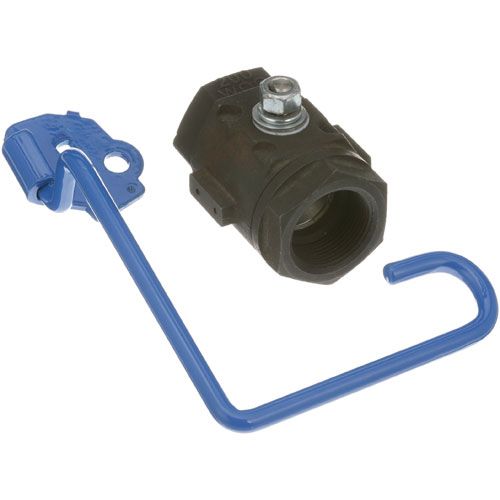Restaurant Staffing Woes: The Role of Demographic Evolution in Heightened Labor Challenges
The restaurant industry is grappling with unprecedented staffing challenges, and demographic evolution plays a critical yet often overlooked role in this crisis. As aging populations reduce the size of the available workforce and younger generations pursue different career paths with a greater emphasis on work-life balance, the traditional labor pool for restaurants is shrinking. Simultaneously, immigration patterns, urbanization trends, and shifting societal values around service industry work are reshaping who is willing and available to take on restaurant roles. These demographic shifts are not just temporary disruptions but signal a long-term transformation in labor availability. Understanding the root causes of this evolution is essential for developing sustainable staffing strategies and adapting to a future where the old models of recruitment and retention may no longer apply.
Understanding Today’s Restaurant Labor Landscape: Why Staffing Is Tougher Than Ever
The restaurant labor shortage is no longer a temporary or isolated issue—it has become a persistent and systemic challenge facing the food service industry in 2025. Job openings in the hospitality sector remain consistently high, with the number of available positions outpacing new hires by more than 20%, according to the U.S. Bureau of Labor Statistics. This gap reflects a growing disconnect between employer demand and the available workforce.
Restaurants today face a range of critical staffing challenges, including:
-
High employee turnover rates drain resources and disrupt smooth operations.
-
A shortage of skilled kitchen staff is limiting the ability to maintain quality and speed.
-
Hiring younger employees might be challenging because many of them value work-life balance and explore other career paths.
-
Heavy reliance on part-time and seasonal labor, which can be unpredictable and insufficient to meet demand.
-
Workers' demands for greater compensation and perks in a competitive market are driving up wage expectations.
Factors contributing to the hiring crisis include:
-
Increased wages
-
Employee burnout
However, these challenges are magnified by deeper demographic shifts, such as:
-
An aging population is reducing the workforce size
-
Declining birth rates are limiting future labor supply
-
Shifting immigration patterns are affecting the availability of foreign-born workers
These demographic changes are fundamentally reshaping the U.S. workforce. Developing successful hiring practices and navigating the changing restaurant labor market requires an understanding of these forces.
Refer to this article on how innovative staff empowerment strategies and dynamic kitchen management techniques can help tackle today’s tough staffing challenges and boost overall restaurant performance.
Demographic Evolution and Its Impact on Restaurant Staffing
Demographic changes are quietly reshaping the restaurant labor market, creating new challenges for staffing. From an aging workforce to shifting immigration patterns, these trends are transforming how restaurants find and keep employees.
Aging Population Shrinks the Workforce Pool
-
The baby boomer generation is retiring in large numbers, significantly reducing the available workforce.
-
More people are exiting the labor force than entering it, causing the overall labor participation rate to decline.
-
Restaurants traditionally depend on a younger, energetic workforce, but fewer people under 25 are entering the job market.
-
This creates a talent gap, especially in fast-paced restaurant environments requiring quick adaptability and physical stamina.
Declining Birth Rates Limit Future Labor Supply
-
After decades of steady decline, the U.S. birth rate reached a record low in 2024.
-
A smaller pool of future workers will enter the job market as fewer children are born today.
-
The restaurant industry now faces increased competition for entry-level workers from sectors like tech, retail, and logistics.
-
These trends force employers to rethink traditional recruitment strategies and explore new approaches to attract talent.
Changing Immigration Patterns Affect Labor Availability
-
The restaurant industry has long relied heavily on immigrant labor for back-of-house roles such as line cooks, dishwashers, and prep staff.
-
Changes in immigration policy and enforcement have slowed the influx of foreign workers.
-
The situation was worse during the COVID-19 epidemic, which slowed immigrant flows and interfered with migration pipelines.
-
Even as immigration resumes, the availability of foreign-born workers remains below.
-
This shortage is especially challenging for urban and independent restaurants that depend on low-cost, flexible labor sources.
Effective Strategies to Overcome Staffing Challenges Driven by Demographic Changes
Though the outlook may seem daunting, several restaurant staffing strategies can help businesses adapt to the changing workforce:
Embrace Technology to Supplement Labor
Restaurants are increasingly turning to automation and AI to reduce dependency on human labor. This includes:
-
Self-service kiosks
-
Automated ordering and payment systems
-
Kitchen robots and food prep automation
While not a total replacement for staff, technology can ease the burden on a limited workforce and allow remaining staff to focus on high-touch guest experiences.
Target Untapped Labor Pools
Restaurants must broaden their hiring scope to include non-traditional workers, such as:
-
Retirees seeking part-time employment
-
People with disabilities
-
Second-chance employees (those reentering the workforce post-incarceration)
-
Veterans
By creating inclusive and flexible job roles, restaurants can attract a more diverse range of candidates and fill gaps left by demographic decline.
Invest in Employee Retention and Development
Given the difficulty of hiring, retaining current employees is more important than ever. Successful strategies include:
-
Competitive wages and benefits
-
Clear career progression paths
-
Professional training and certification programs
-
A healthy work-life balance
Creating a culture of respect and opportunity reduces turnover and builds a more resilient workforce.
Flexible Scheduling and Work Conditions
Younger generations prioritize flexibility and mental health. Offering:
-
Part-time roles with consistent hours
-
Four-day work weeks
-
Mental health support
-
Paid time off
can make a restaurant more attractive to Gen Z and Millennial workers who are often deterred by the traditionally grueling nature of restaurant jobs.
Leverage Local Community Networks
Restaurants should consider partnering with:
-
Local high schools and colleges for job fairs
-
Workforce development programs
-
Nonprofit organizations focused on employment training
These collaborations can help build a steady pipeline of entry-level restaurant workers and improve community relations.
Read this article on how mastering restaurant labor cost calculation can help you optimize your workforce and overcome these challenges effectively.
Why Traditional Staffing Models Are No Longer Sustainable
As demographic shifts reshape the labor market, traditional restaurant staffing models no longer suffice. Aging populations, declining birth rates, and changing immigration patterns mean the once-reliable pool of workers is shrinking. To thrive in this new reality, restaurants must adopt innovative strategies tailored to today’s workforce dynamics.
Key Approaches Include:
-
Leveraging Technology: Automate routine tasks with digital ordering systems, kitchen robotics, and smart scheduling software to reduce dependence on labor-intensive processes.
-
Expanding the Talent Pool: Hire beyond traditional candidates by recruiting retirees, people with disabilities, and underrepresented groups to tap into overlooked labor sources.
-
Investing in Employee Development: Create in-house training and career progression programs to retain staff and build loyalty, reducing costly turnover.
-
Offering Flexible Work Arrangements: Adapt schedules to accommodate workers’ needs for part-time hours, remote options, or mental health support, making roles more attractive and sustainable.
-
Building Community Partnerships: Collaborate with local schools, nonprofits, and workforce programs to create pipelines of qualified candidates and support ongoing training initiatives.
By embracing these strategies, restaurants can mitigate labor shortages, enhance employee satisfaction, and maintain operational efficiency despite demographic challenges. In an evolving labor market, adaptability is the key ingredient to staffing success.
Check this article on how automation is revolutionizing the heart of restaurants to create more sustainable, efficient operations for the future.
How One Restaurant Can Successfully Adapt to Today’s Labor Challenges
To navigate the current labor crisis effectively, a restaurant group must adopt a forward-thinking and flexible strategy that supports both short-term needs and long-term growth.
Invest in Employee Retention: It's frequently less expensive to keep current employees than to hire new ones regularly. Prioritizing career advancement and employee happiness can greatly lower attrition and increase team stability.
-
Offer competitive wages and benefits, including health insurance and paid time off.
-
Encourage a productive workplace culture that prioritizes work-life harmony.
-
Create clear career advancement opportunities and offer ongoing training.
Embrace Technology: Integrating technology into daily operations can streamline workflows and reduce labor pressure. It also enhances the customer experience while improving overall efficiency.
-
Implement self-service kiosks and digital ordering systems to streamline operations.
-
Use scheduling and workforce management software to reduce manual workload and improve efficiency.
Expand Recruitment Strategies: Broadening recruitment efforts can help tap into overlooked talent pools. Diverse hiring approaches are essential to meet today’s evolving labor demands.
-
Employ people from underrepresented labor groups, such as immigrants, elderly workers, and those with impairments.
-
Collaborate with workforce development initiatives and vocational schools to recruit and train fresh talent.
Offer Flexibility: For today's workforce, schedule and job structure flexibility are becoming more and more crucial. Meeting these demands can increase employee retention and satisfaction.
-
Provide part-time, remote, or hybrid roles where possible.
-
Support nontraditional schedules to attract a broader range of workers.
-
By combining these strategies, restaurant groups can build a more resilient, engaged workforce equipped to meet evolving industry demands.
Final Thoughts: The Future of Restaurant Labor Adapting to Demographic Reality
The restaurant industry’s staffing woes are deeply intertwined with ongoing demographic shifts that are reshaping the labor market in profound ways. As aging populations, declining birth rates, and changing immigration patterns continue to shrink the available workforce, traditional hiring and retention models must evolve. By embracing innovative strategies such as leveraging technology, expanding talent pools, investing in employee development, and offering flexible work conditions, restaurants can not only overcome these challenges but also build a resilient, engaged workforce ready for the future. Understanding and adapting to these demographic realities is essential for sustaining success in an increasingly competitive and complex labor environment.
Having trouble keeping your kitchen equipment fully functional during busy hours? PartsFe provides essential kitchen equipment parts like ovens, dishwashers, and refrigerators from reliable brands such as Turbochef, Hobart, and Frymaster. Find the quality parts you need to keep your kitchen running smoothly despite staffing hurdles!
FAQs
How does demographic change affect restaurant staffing?
Demographic changes like baby boomer retirements, fewer young workers entering the market, and decreased immigrant labor availability limit the number of potential employees for restaurants. This forces restaurants to compete harder for fewer workers.
What are the biggest staffing challenges restaurants face today?
High employee turnover, difficulty hiring younger and skilled workers, rising wage expectations, and reliance on part-time or seasonal labor are key challenges compounded by demographic shifts.
Are demographic trends in restaurant staffing a temporary issue?
No, demographic trends like aging populations and declining birth rates represent long-term shifts that will continue to impact labor availability, requiring sustainable and adaptive staffing strategies.











